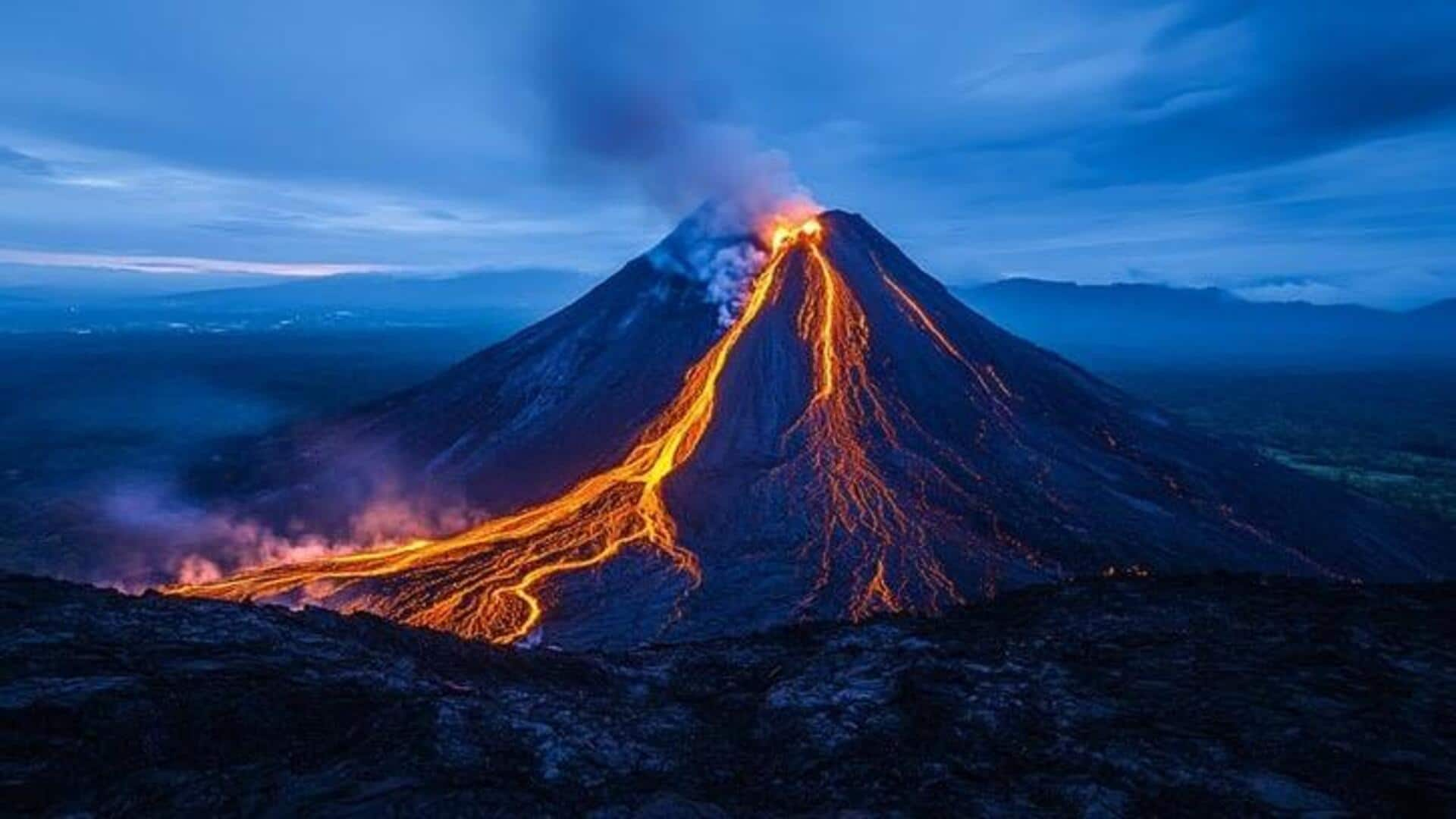
Night volcano watching: What to know
What's the story
Night volcano watching is nothing short of mesmerizing, it lets you witness the raw power and beauty of nature. The glowing lava against the night sky makes for a stunning visual spectacle, which is both thrilling and awe-inspiring. Not to mention, you get to see volcanic activity from different angles, offering unique perspectives, which aren't visible during the day. Here are some insights into making the most of this extraordinary experience.
#1
Choosing the right location
Picking an ideal spot is essential for night volcano watching. Choose locations that provide clear views of the volcano without obstructions. Higher grounds or designated viewing platforms tend to offer better views. Safety is paramount, so pick spots that are at a safe distance from active lava flows and other dangers.
#2
Understanding volcanic activity
Before you set out for your night adventure, know about basic volcanic activity patterns. Knowing terms like lava flow, eruption types, and seismic activity can make your experience better by adding context to what you see. This knowledge aids in appreciating the dynamic processes happening inside and around a volcano.
#3
Essential gear for night viewing
Proper gear enhances comfort and safety during night volcano watching. Bring binoculars or telescopes for detailed views of distant eruptions. A flashlight with red light mode preserves night vision while navigating in low-light conditions. Dress in layers to stay warm as temperatures can drop significantly at higher altitudes during nighttime.
#4
Safety precautions to consider
Safety should always be your top priority when going for night volcano watching activities. Stay updated on current volcanic alerts by local authorities or geological services before venturing out. Always stick to marked trails and respect any restricted areas around active zones to avoid the risks of sudden eruptions or gas emissions.